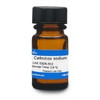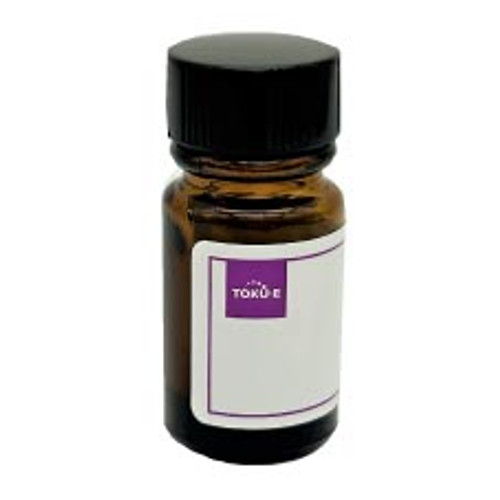Cefminox Sodium Hydrate is the sodium salt form of Cefminox, a semi-synthetic, second-generation cephalosporin antibiotic. It is freely soluble in aqueous solution.
We also offer:
- Cefminox (C076)
| Mechanism of Action | Like β-lactams, cephalosporins interfere with PBP (penicillin binding protein) activity involved in the final phase of peptidoglycan synthesis. PBP’s are enzymes which catalyze a pentaglycine crosslink between alanine and lysine residues providing additional strength to the cell wall. Without a pentaglycine crosslink, the integrity of the cell wall is severely compromised and ultimately leads to cell lysis and death. Resistance to cephalosporins is commonly due to cells containing plasmid encoded β-lactamases. Cefminox sodium, like many cephalosporins, is resistant to β-lactamase activity. |
| Spectrum | Cefminox sodium is a broad-spectrum antibiotic targeting a wide range of Gram-positive and Gram-negative microbes including anaerobes. |
| Microbiology Applications | Because of its potent properties against anaerobes, cefminox sodium can be used in cell media culture to select against Bacteroides, Clostridium, and other susceptible anaerobic bacteria. |
| Molecular Formula | C16H20N7NaO7S3 • 7H2O |
| References | Georgopapadakou, N. H. "Mechanisms of Action of Cephalosporin 3'-quinolone Esters, Carbamates, and Tertiary Amines in Escherichia Coli." American Society for Microbiology 37.3 (1992): 559-65. Antimicrobial Agents and Chemotherapy. Web. 21 Aug. 2012.
Jacobs, Michael R., and et al. "In Vitro Activities of Cefminox against Anaerobic Bacteria Compared with Those of Nine Other Compounds." Antimicrobial Agents and Chemotherapy 42.3 (1998): 495-501. www.ncbi.gov. Web. 27 Aug. 2012. "Cefminox Sodium Official Monographs." JPDB (n.d.): 332. Ncbi.gov. Web. 12 Mar. 2013. |
| MIC | Bacteroides distasonis| ≤0.06 - 256|| Bacteroides ovatus| 2 - >128|| Bacteroides thetaiotaomicron| 0.5 - 128|| Bacteroides uniformis| ≤0.06 - 128|| Bacteroides vulgatus| 1 - 128|| Bifidobacterium spp.| 2 - >128|| Clostridium bifermentans| 0.25 - 2|| Clostridium cadaveris| 0.25 - 2|| Clostridium difficile| 2 - 4|| Clostridium perfringens| 0.5 - 2|| Clostridium sordellii| 0.25 - 2|| Clostridium spp.| 0.25 - 2|| Clostridium tertium| 0.25 - 2|| Escherichia coli | 0.125 - 16|| Eubacterium lentum| 2 - >128|| Fusobacteria| 0.06 - 2|| Fusobacterium mortiferum| 0.5 - 1|| Fusobacterium necrophorum| 0.06 - 0.25|| Fusobacterium nucleatum| 0.06 - 1|| Fusobacterium varium| 0.25 - 2|| Lactobacillus spp.| 2 - >128|| Peptostreptococcus anaerobius| 0.125 - 4|| Peptostreptococcus asaccharolyticus| 0.125 - 4|| Peptostreptococcus magnus| 0.125 - 4|| Peptostreptococcus tetradius| 0.125 - 4|| Porphyromonas| 0.125 - 64|| Porphyromonas asaccharolytica| 0.125 - 64|| Prevotella bivia| 0.5 - 16|| Prevotella buccae| 0.125 - 64|| Prevotella corporis | 0.25 - 4|| Prevotella disiens| 0.5 - 64|| Prevotella intermedia| 0.5 - 16|| Prevotella melaninogenica| 1 - 16|| Prevotella oralis| 0.125 - 64|| Prevotella oris| 0.125 - 64|| Propionibacterium acnes| 0.5 - 4|| Propionibacterium spp.| 0.5 - 4|| Pseudomonas aeruginosa| 256|| |








